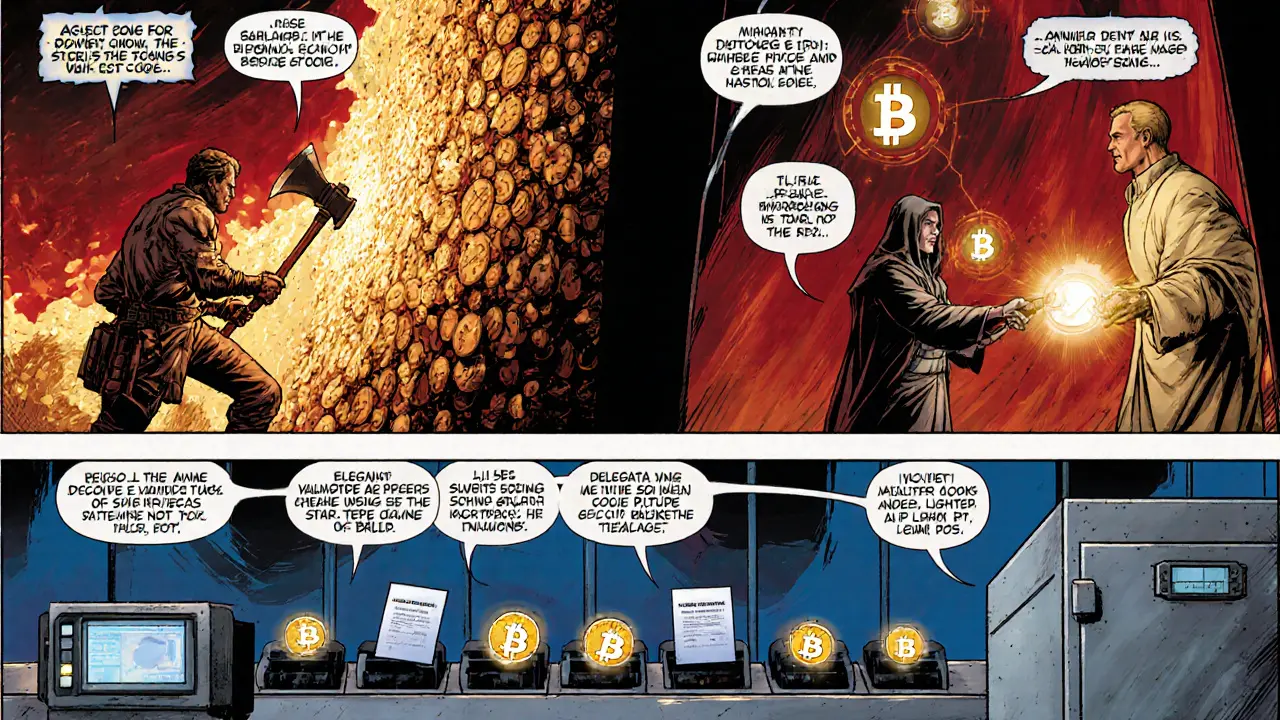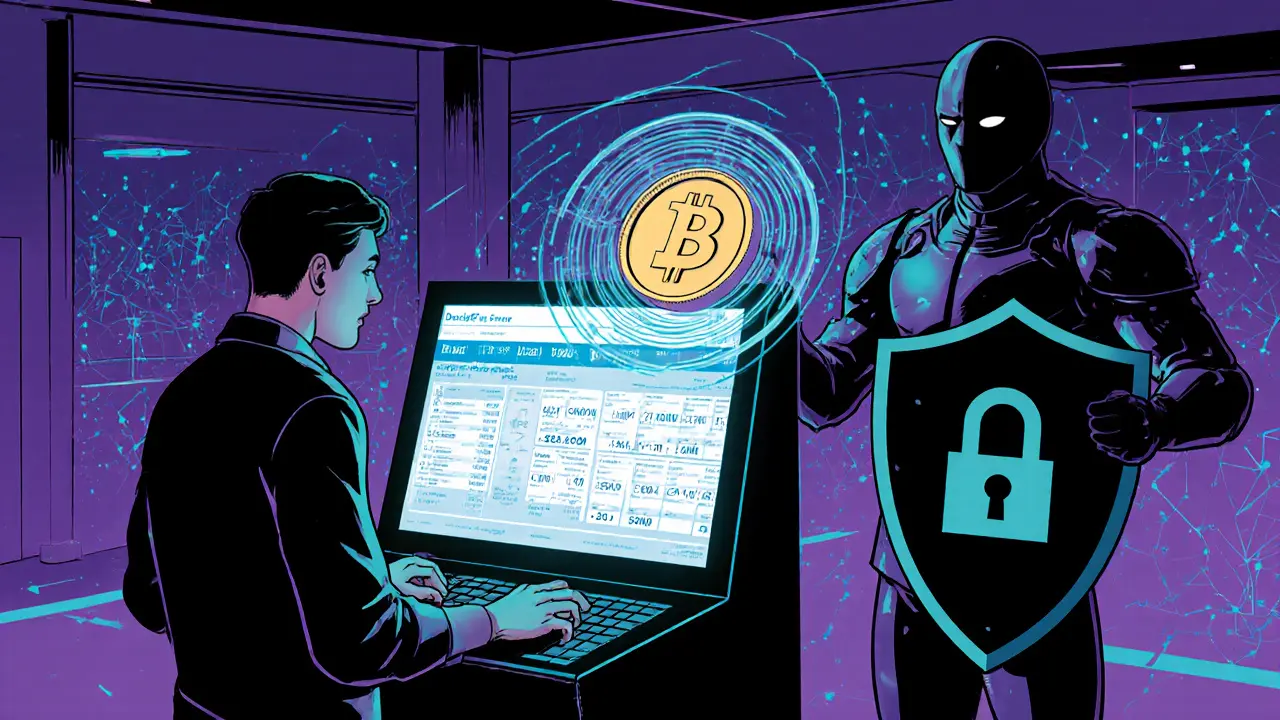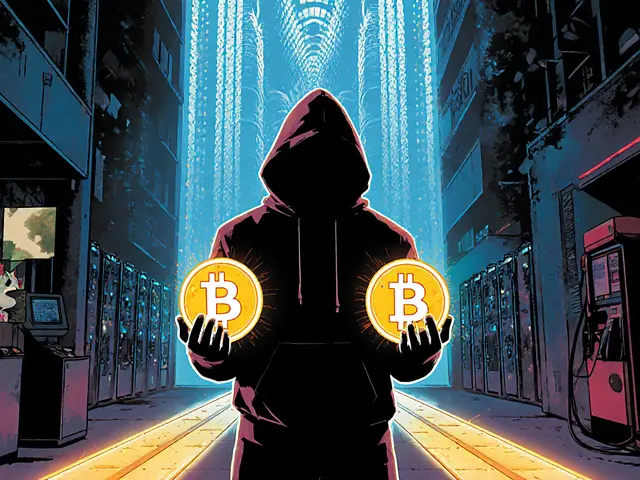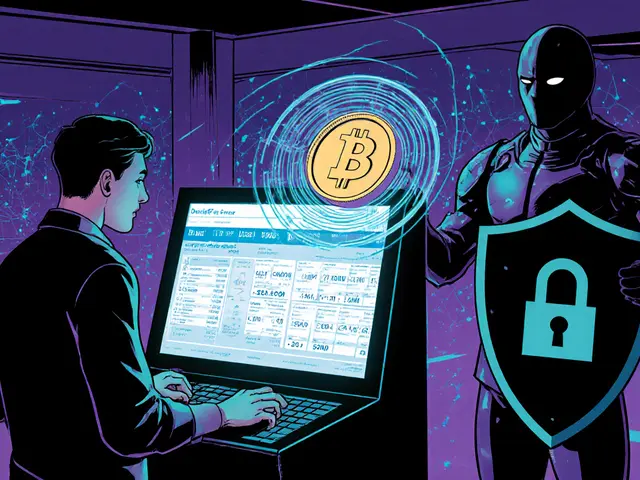Double-Spending Attack Prevention Calculator
Blockchain Security Parameters
Adjust the parameters below to understand how different factors influence double-spending resistance.
Security Analysis Results
Enter parameters and click "Analyze Security" to see the results.
Note: This calculator simulates the impact of various security measures on double-spending risk. Real-world security depends on multiple factors including network size, validator behavior, and operational practices.
When you deposit crypto into an exchange, you expect it to show up safely in your account. The biggest nightmare for any platform is a Double-Spending Attack is a fraud where the same coins are spent twice, often by exploiting the short window between deposit submission and blockchain finality. In this guide we’ll walk through how modern exchanges close that window, what technical safeguards they rely on, and which pitfalls still need attention.
Why Double‑Spending Matters for Exchanges
Exchanges are the bridge between blockchain networks and everyday users. A successful double‑spending attempt can let an attacker withdraw funds while the original deposit is later rolled back, leaving the platform short‑changed. Because exchanges handle millions of dollars daily, even a single breach can damage reputation and attract regulatory scrutiny.
Core Defense: Blockchain Consensus Mechanisms
At the heart of any anti‑double‑spending strategy is the network’s consensus protocol. Below are the three most common mechanisms you’ll encounter.
- Proof of Work (PoW) is a system where miners solve complex puzzles to add blocks. Controlling >51% of the network’s hash power makes a double‑spend theoretically possible, but the cost is prohibitive for established chains like Bitcoin.
- Proof of Stake (PoS) picks validators based on the amount of token they lock up. If a validator tries to revert a transaction, their staked coins are slashed, creating a strong economic deterrent.
- Delegated Proof of Stake (DPoS) adds a voting layer: token holders elect a set of delegates to produce blocks. Misbehaving delegates lose voting rights and face penalty fees.
Transaction Verification Inside the Exchange
When a user sends crypto to an exchange, the platform runs a verification pipeline:
- Check that the transaction is valid under the Distributed Ledger rules (no double spends, correct signatures).
- Wait for a predefined number of Transaction Confirmations - each new block adds another layer of security.
- Update the user’s balance only after the confirmation threshold is met.
- Log the event with a Validator ID so any later dispute can be traced.
Most exchanges enforce six confirmations for Bitcoin, three for Ethereum, and may require extra waiting periods for large withdrawals or new accounts.

Comparing Consensus Strengths for Double‑Spending
| Mechanism | Economic Barrier | Energy Cost | Centralization Risk | Typical Confirmation Requirement |
|---|---|---|---|---|
| Proof of Work | Control >51% hash power | High (GPU/ASIC) | Mining pools may concentrate power | 6 (BTC), 12 (LTC) |
| Proof of Stake | Stake >51% of total tokens | Low (no mining) | Wealth concentration possible | 3-6 (ETH 2.0) |
| Delegated PoS | Control >51% of delegate votes | Low | Delegate collusion risk | 1-3 (EOS) |
Real‑World Monitoring and Machine Learning
Beyond protocol guarantees, exchanges run continuous monitoring:
- Realtime dashboards flag rapid deposit‑withdrawal cycles that match known double‑spend patterns.
- Machine‑learning models analyze transaction velocity, source address age, and network latency to score risk.
- Suspicious deposits may be placed in a “quarantine” pool pending extra confirmations.
These layers catch attacks that try to slip through before the blockchain finality kicks in.
Best Practices for Exchange Operators
If you’re building or auditing an exchange, follow this checklist:
- Set conservative confirmation thresholds - err on the side of security for high‑value assets.
- Implement automatic quorum checks on each incoming transaction.
- Use multi‑signature wallets for hot‑storage to limit exposure.
- Deploy behaviour‑based alerts that trigger manual review for out‑of‑pattern activity.
- Maintain a rollback‑ready audit log that records validator IDs and block hashes for every credit.
- Stay updated on protocol upgrades (e.g., Bitcoin Taproot, Ethereum’s Shanghai) as they can affect confirmation times.
Future Trends: Hybrid Consensus and Governance
Researchers are experimenting with hybrid models that blend PoW’s security with PoS’s efficiency. Hybrid chains aim to keep the double-spending barrier high while cutting energy use. At the same time, better on‑chain governance (voting, slashing) promises faster response to malicious validators.
Exchanges that adopt these upcoming networks early will benefit from quicker finality without compromising safety.
Quick Takeaways
- Double‑spending attacks target the gap between deposit and confirmation.
- Consensus mechanisms (PoW, PoS, DPoS) provide the core economic deterrent.
- Exchanges enforce multiple confirmations and real‑time monitoring.
- Machine‑learning adds a predictive layer against fast attacks.
- Future hybrid consensus may offer faster, greener protection.
Frequently Asked Questions
What is a double‑spending attack?
It’s when a fraudster attempts to use the same cryptocurrency unit in two different transactions, usually by exploiting the time before a transaction is fully confirmed on the blockchain.
Why do exchanges require multiple confirmations?
Each new block added to the chain makes the previous transactions harder to reverse. Multiple confirmations dramatically lower the chance that a double‑spend could succeed.
Can Proof of Stake prevent 51% attacks?
PoS replaces computational power with token ownership. Controlling >51% of the stake still enables attacks, but the attacker risks losing a large portion of their locked‑up tokens as a penalty.
How does machine learning help detect double‑spending?
Models learn typical transaction patterns (size, frequency, source age). When a deposit‑withdrawal cycle deviates sharply, the system flags it for manual review before the funds are released.
Will hybrid consensus make double‑spending obsolete?
Hybrid designs aim to combine PoW’s robustness with PoS’s speed. They raise the cost of attacks, but no system can claim absolute immunity; exchanges must still enforce confirmations and monitoring.




Annie McCullough
October 11 2025Sure the double‑spend mitigation is “bulletproof” but in reality the latency windows still expose a vector – think of race‑condition exploits 🚀
Carol Fisher
October 12 2025American exchanges lead the charge against fraud and anyone who doubts our security is just feeding the narrative of weak regulators 🇺🇸💪
Hanna Regehr
October 14 2025If you’re setting up a new platform, start by aligning your confirmation thresholds with the underlying consensus – Bitcoin typically needs six blocks, while newer PoS chains can get away with three. Adjusting these numbers based on transaction size is a best‑practice that many veterans swear by.
Ben Parker
October 15 2025Nice work! 😊
Daron Stenvold
October 16 2025Double‑spending attacks exploit the brief period between a user’s deposit broadcast and the moment the network reaches finality, and this gap is the Achilles’ heel of any exchange. To close it, operators layer multiple defenses that start at the protocol level and extend to on‑chain analytics. First, the consensus mechanism itself imposes an economic cost: PoW demands hash power, PoS stakes tokens that can be slashed, and DPoS ties block production to elected delegates. Second, exchanges enforce a minimum number of confirmations before crediting a user, a policy that is often calibrated to the asset’s typical block time and value. Third, sophisticated monitoring systems ingest live mempool data and flag transactions that exhibit rapid deposit‑withdrawal cycles. Machine‑learning models can score each incoming transfer based on source address age, transaction velocity, and network latency, assigning a risk tier that determines whether extra confirmations are required. Fourth, many platforms quarantine high‑value or suspicious deposits in a cold‑storage vault pending manual review, thereby preventing immediate exposure. Fifth, audit logs record validator IDs, block hashes, and timestamps for every credit, creating a tamper‑evident trail useful for post‑mortem investigations. Finally, regular updates to software stacks ensure compatibility with protocol upgrades such as Taproot or Shanghai, which can alter block propagation dynamics. In practice, a combination of six confirmations for Bitcoin, three for Ethereum, and dynamic thresholds for emerging chains yields a robust security posture. Operators must also educate users about why their balances may appear delayed, turning transparency into a trust‑building measure. Continuous stress‑testing of the deposit pipeline, including simulated double‑spend attempts, helps uncover hidden latency windows. By orchestrating these layers-protocol economics, confirmation policies, real‑time analytics, and procedural safeguards-exchanges can make the cost of a successful double‑spend prohibitive. The key is never to rely on a single line of defense; depth and redundancy are the hallmarks of a resilient exchange architecture. Staying ahead of attackers requires a culture of vigilance and continuous improvement.
hrishchika Kumar
October 18 2025From a global standpoint, especially in rapidly growing markets like India, the same principles apply but the infrastructure constraints demand creative solutions such as tiered confirmation windows that adapt to network congestion.
Nina Hall
October 19 2025Great rundown! For anyone just getting started, remember that setting conservative confirmation thresholds early on can save a lot of headaches later.
Emily Kondrk
October 21 2025But don’t be fooled – the “conservative” numbers are often a smokescreen for hidden fees and back‑door settlement tricks that the big players don’t want you to see. 👁️🗨️
Laura Myers
October 22 2025OMG the whole double‑spend saga sounds like a thriller movie – you never know when the next twist will hit your wallet! 🎭
Anjali Govind
October 23 2025I'm curious how different layer‑2 solutions handle double‑spending – do they rely on the main chain confirmations or have their own security model?
Sanjay Lago
October 25 2025lol they usually piggyback on the main chain's finality but add extra checkpoints, so even if a layer‑2 tries to cheat the base chain would catch it.
Ted Lucas
October 26 2025When you stack PoS staking slashes with real‑time anomaly detection, you get a defense in depth that’s practically tamper‑proof – think of it as a multi‑layer firewall for your funds 💥
Manas Patil
October 28 2025Bridging the gap between traditional finance and crypto ecosystems means adopting hybrid consensus models that marry security with speed, paving the way for a safer, greener future.